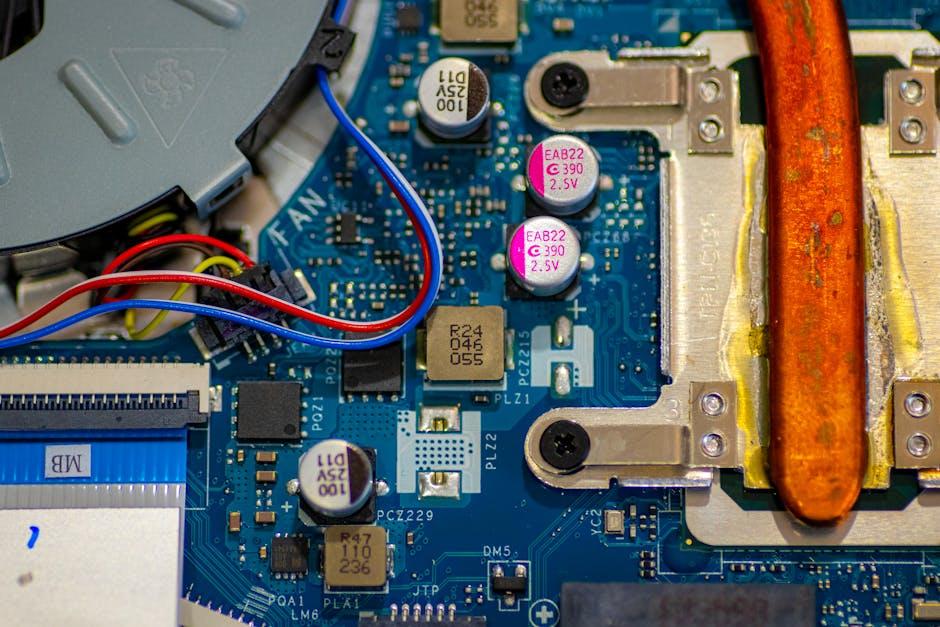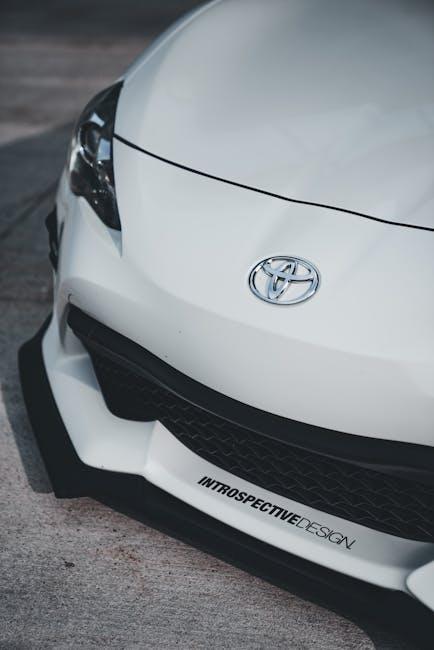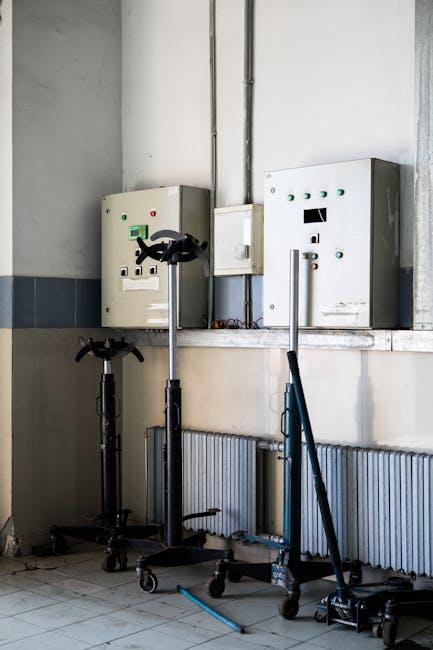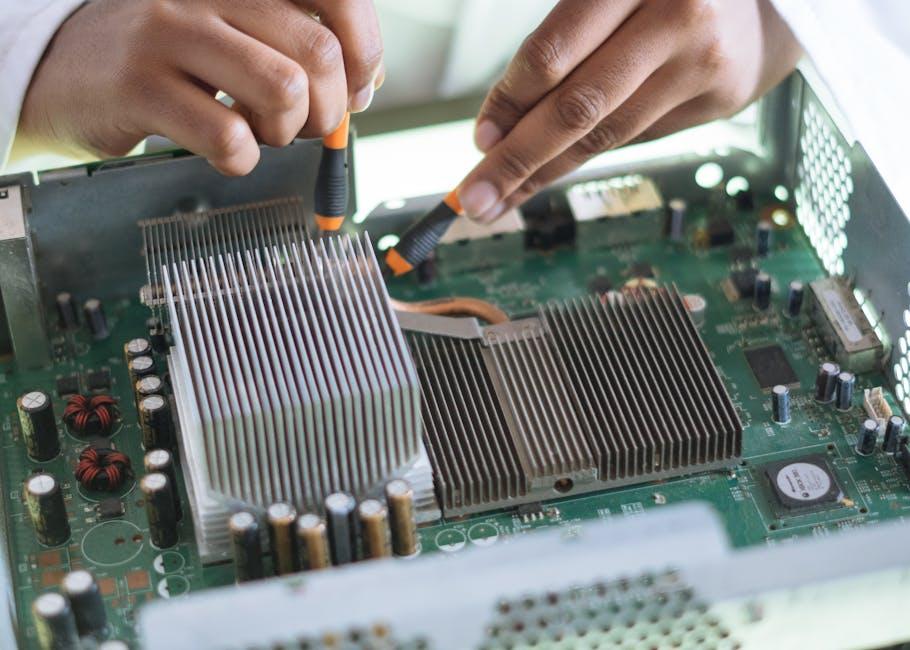Beneath the hood of every modern car lies a complex web of wires, circuits, and connections—an electrical system that powers everything from your headlights to your infotainment screen. Upgrading this vital network can transform your driving experience, enhancing performance, safety, and convenience. Whether you’re a seasoned gearhead seeking to install high-powered accessories or a curious driver wanting to improve your car’s reliability, understanding how to upgrade your car’s electrical system is an essential skill. In this article, we’ll navigate the essentials of car electrical upgrades, breaking down the process into manageable steps and shedding light on the tools and techniques that can bring your vehicle’s electrical heart into the future.
Table of Contents
- Choosing the Right Components for Your Car’s Electrical Upgrade
- Understanding Your Vehicle’s Current Electrical System Layout
- Step-by-Step Guide to Installing a High-Capacity Alternator
- Upgrading Your Battery and Wiring for Improved Performance
- Enhancing Safety with Proper Fusing and Circuit Protection
- Testing and Troubleshooting After Your Electrical System Upgrade
- Q&A
- The Conclusion

Choosing the Right Components for Your Car’s Electrical Upgrade
Upgrading your car’s electrical system means more than simply swapping out parts—it’s about selecting components that work harmoniously to enhance performance while ensuring reliability. Begin by identifying your vehicle’s power requirements and the intended upgrades, such as advanced audio systems or additional lighting. Consider quality brands that provide consistent voltage regulation and components designed to withstand the automotive environment’s vibrations and temperature variations. Prioritizing compatibility and durability will save you from frequent replacements and unexpected electrical failures.
When choosing components, don’t overlook the importance of a well-matched wiring harness and fuses suited to the increased load. Essential items to evaluate include:
- Alternators and batteries capable of meeting new power demands
- Upgraded wiring with thicker gauges for higher current capacity
- Relays and switches rated for durability and efficiency
- Fuses appropriately rated for circuit protection
| Component | Why It Matters | Key Feature |
|---|---|---|
| Battery | Maintains consistent power supply | High cold-cranking amps |
| Alternator | Recharges battery & powers system | Output exceeding stock specs |
| Wiring | Handles increased electrical load | Thicker wire gauge |
| Fuses | Protects circuits from overload | Correct amperage ratings |

Understanding Your Vehicle’s Current Electrical System Layout
Before diving into upgrades, it’s essential to map out the existing electrical system in your vehicle. Most modern cars operate on a standard 12-volt system, but variations in wiring gauge, fuse types, and component layouts can significantly affect your modification plans. Start by consulting your car’s wiring diagram, which can usually be found in the owner’s manual or service guide. This visualization helps you identify key components such as the battery, alternator, fuse box, relays, and grounding points. Getting a clear picture of these connections ensures that any new installations or replacements are compatible without risking electrical failures or shorts.
Understanding how your system handles current flow also involves recognizing the load capacity and the performance of existing components. For example, the alternator’s output rating (measured in amperes) dictates how much additional equipment your car’s electrical system can realistically support. Below is a simple reference table highlighting common vehicle electrical elements and their roles:
| Component | Function | Typical Voltage/Rating |
|---|---|---|
| Battery | Primary power source for starting and accessories | 12 V, 45-70 Ah |
| Alternator | Charges battery and powers electrical components while running | 12 V, 60-150 A |
| Fuse Box | Protects circuits from overload and short circuits | Varies per fuse, typically 5-30 A |
| Ground Points | Provides a return path for electrical current | Vehicle chassis |
- Check wire thickness: Thicker gauge wires handle more current safely.
- Inspect connectors and terminals: Corrosion or loose connections can cause voltage drops or failures.
- Note any aftermarket additions: Identify existing modifications to prevent overloads.

Step-by-Step Guide to Installing a High-Capacity Alternator
Begin by disconnecting the negative terminal of your car’s battery to ensure safety throughout the installation process. Locate the existing alternator by following the serpentine belt to the component attached to the engine block. Remove the belt by loosening the tensioner, then disconnect the wiring harness and bolts securing the alternator. When replacing the alternator, position the new high-capacity unit into place, fasten the mounting bolts securely, and reconnect the wiring harness. Reinstall the serpentine belt by adjusting the tensioner to the correct tension, ensuring it runs smoothly without slipping.
Before reconnecting the battery, double-check all connections to avoid any electrical faults. It’s important to verify compatibility of the new alternator with your vehicle’s current electrical system, which often requires consulting your car’s manual or a professional. Test the system by starting the car and using a multimeter to measure the output voltage; it should typically read between 13.8V and 14.5V. The following table summarizes the key specs to check during your upgrade:
| Specification | Recommended Range | Notes |
|---|---|---|
| Output Voltage | 13.8V – 14.5V | Ensures battery charging |
| Amperage Capacity | 60A – 150A+ | Depends on power needs |
| Pulley Type | Standard or Serpentine | Match your belt system |

Upgrading Your Battery and Wiring for Improved Performance
Enhancing your vehicle’s power delivery begins with selecting a high-capacity battery designed to handle increased electrical demands. Opt for batteries with a higher Cold Cranking Amps (CCA) rating and deep cycle capabilities to ensure long-lasting, reliable performance. It’s also wise to choose maintenance-free or AGM (Absorbent Glass Mat) batteries, which excel at resisting vibrations and offer better charge retention—perfect for modern vehicles loaded with electronic accessories.
Equally essential is upgrading the wiring harness to improve current flow and minimize voltage drops. Use thicker gauge wires made of high-purity copper that resist corrosion and heat buildup. Consider installing quality terminals and connectors specifically rated for automotive use, and ensure all solder joints and connections are properly insulated. Here’s a quick comparison of wire gauges and their recommended uses:
| Wire Gauge | Recommended Use |
|---|---|
| 14 AWG | Headlights, Brake Lights |
| 12 AWG | Audio Systems, Secondary Devices |
| 10 AWG | High Power Accessories |
| 8 AWG | Upgraded Batteries & Alternators |

Enhancing Safety with Proper Fusing and Circuit Protection
Integrating proper fusing and circuit protection is essential when upgrading your car’s electrical system to prevent potential damage caused by electrical faults. Using the correct type and rating of fuses ensures that the current flow is interrupted safely during an overload or short circuit, protecting both your wiring and electronic components. Without adequate protection, even a minor electrical mishap can lead to costly repairs or hazardous situations.
To optimize safety, consider these essential elements:
- Fuse Types: Blade, glass tube, and resettable circuit breakers, each suited for specific applications.
- Proper Sizing: Always match the fuse rating to the wire gauge and device specifications to avoid nuisance blowing or insufficient protection.
- Fuse Placement: Position fuses as close as possible to the power source to safeguard the entire circuit length.
- Regular Inspection: Check fuses and wiring periodically to identify wear or corrosion that could compromise safety.
| Fuse Type | Typical Use | Key Benefit |
|---|---|---|
| Blade Fuse | Common automotive circuits | Easy to replace and widely available |
| Glass Tube Fuse | Older vehicle systems | Simple and cost-effective |
| Resettable Circuit Breaker | High-draw accessories | Reusable and reduces maintenance |

Testing and Troubleshooting After Your Electrical System Upgrade
Once you’ve completed your electrical system upgrade, it’s crucial to dive into comprehensive testing to ensure everything operates flawlessly. Start by inspecting all connections visually for any loose wires or corrosion that might cause intermittent issues. Use a multimeter to check voltage levels at various points in the system, particularly around new components. Pay special attention to grounding points and fuses, as they frequently become trouble spots after modifications. Documenting your findings during this phase can save time later if you need to revisit any circuits.
Should you encounter any glitches or failures, don’t rush! Break down the system into smaller sections and test each independently to isolate the problem quickly. Here are some essential troubleshooting tips to follow:
- Reset the system: Disconnect the battery for a few minutes to clear out any residual errors in the onboard computer.
- Check for error codes: Use an OBD-II scanner to identify potential electronic faults reported by the vehicle’s control modules.
- Test with minimal load: Turn off aftermarket accessories and reintroduce them one by one to spot the root cause.
| Symptom | Possible Cause | Quick Fix |
|---|---|---|
| Dim or flickering lights | Loose wiring connection | Tighten terminals and connectors |
| Blown fuses repeatedly | Short circuit | Inspect wiring for damage and replace faulty sections |
| Non-responsive accessories | Insufficient power supply | Upgrade fuse rating or check alternator output |
Q&A
Q&A: How to Upgrade Your Car’s Electrical System
Q1: Why should I consider upgrading my car’s electrical system?
A1: Your car’s electrical system powers everything from the ignition to the infotainment. Upgrading it can enhance performance, support modern accessories, prevent frequent battery drain, and ensure your vehicle runs smoothly in today’s tech-driven world.
Q2: What are the signs that my car’s electrical system needs an upgrade?
A2: Common signs include dimming headlights, slow power window operation, frequent blown fuses, flickering dashboard lights, or a struggling battery. If your vehicle can’t keep up with added gadgets like GPS or upgraded sound systems, it’s time to rethink your electrical setup.
Q3: Which components are usually upgraded in a car’s electrical system?
A3: Common upgrades include the battery (opt for high-capacity or AGM types), alternator (higher output models), wiring (thicker gauge for better conductivity), fuses, relays, and sometimes the ignition switch or ECU to handle greater electrical loads.
Q4: Can I upgrade the electrical system myself?
A4: Basic tasks like replacing the battery or fuses are doable for DIY enthusiasts. However, significant upgrades—rewiring, installing a high-output alternator, or integrating advanced electronics—require technical knowledge and tools. Safety is paramount; when in doubt, consult a professional.
Q5: How do upgraded components affect my car’s performance?
A5: A robust electrical system provides steady and ample power, reducing strain on parts. This leads to improved starting reliability, consistent lighting, smoother operation of electronic accessories, and a longer lifespan for your vehicle’s electrical components.
Q6: What’s the cost implication of upgrading the electrical system?
A6: Costs vary widely based on the extent of the upgrade. Minor fixes like battery replacement can be relatively affordable, while installing a high-output alternator and rewiring may run into hundreds or more. Consider it an investment in vehicle reliability and longevity.
Q7: Are there any tips to maintain an upgraded electrical system?
A7: Absolutely. Regularly inspect wiring for corrosion or damage, ensure battery terminals are clean, avoid overloading circuits, and schedule periodic checks with a qualified mechanic. Keeping your system tidy and tested prevents surprises down the road.
Q8: Will upgrading my electrical system improve fuel efficiency?
A8: Indirectly, yes. A healthy electrical system reduces the engine’s load, as it doesn’t have to work harder to power electrical components. This efficiency can translate into modest fuel savings and reduced emissions over time.
Q9: Can modern electrical upgrades integrate with my car’s original systems?
A9: Many aftermarket upgrades are designed to be compatible with factory wiring and modules. However, integration depends on your vehicle’s make, model, and year. Research or professional advice can help avoid compatibility pitfalls.
Q10: What’s the first step to embarking on an electrical upgrade?
A10: Start with a thorough diagnostic of your current system. Identify weaknesses, understand your power needs, and set clear goals. From there, choose quality components suited to your vehicle and lifestyle, and plan the installation carefully.
The Conclusion
Upgrading your car’s electrical system is more than just a technical task—it’s an investment in the longevity, performance, and reliability of your vehicle. Whether you’re enhancing power delivery, installing modern accessories, or simply troubleshooting outdated wiring, taking the time to understand and improve these vital components can transform your driving experience. With careful planning, the right tools, and this guide in hand, you’re well on your way to electrifying your ride and hitting the road with renewed confidence. Remember, every upgrade is a step toward a smarter, safer, and more connected car.


2 Comments
x3tlaz
x3tlaz